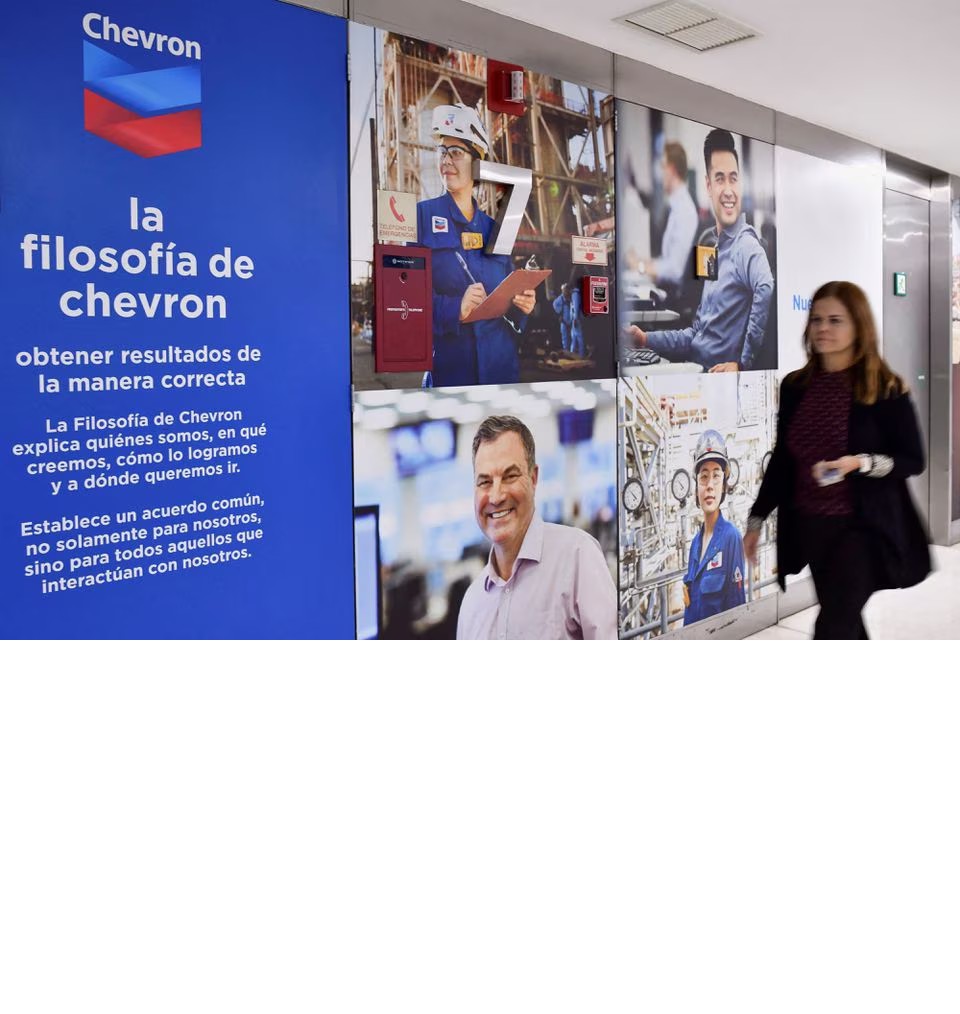HOUSTON, (Reuters) – Chevron Corp CVX.Nplans to add 65,000 barrels per day (bpd) of Venezuelan oil output by the end of 2024 through its first major drilling campaign in the nation since Washington allowed it to restore production clipped by U.S. sanctions, three people familiar with the matter said.
The effort could help Venezuela keep lifting crude production and speed Chevron’s goal of recouping $3 billion in unpaid dividends and debt from its projects in the country.
Chevron’s joint ventures with Venezuelan state oil company PDVSA now produce some 135,000 bpd, according to independent estimates, near the level they had before Washington imposed sanctions in 2019. Current oil flows mark a 70%-increase from average output in 2022.
Chevron’s recent contribution to Venezuela’s crude output has been meaningful as the OPEC-member country tries to stabilize and increase production to pre-sanctions levels.
Almost all of the country’s 70,000-bpd output increase so far this year has come from the Chevron-PDVSA projects. But to go further requires large specialized drilling rigs that might be difficult to find in Venezuela, the people said.
TARGET: 1 MILLION BARRELS PER DAY
Chevron’s production target of reaching 200,000 bpd by the end of next year could go far to helping Venezuela achieve its aim to surpass 1 million bpd, from an average of 785,000 bpd so far in 2023.
The California-based company’s campaign calls for addition of at least two powerful drilling rigs. The equipment will be installed initially at the Petroindependencia project in the Orinoco Belt, Venezuela’s main oil-production region, one of the people said.
Two other joint ventures, Petropiar also in the Orinoco Belt and Petroboscan near Lake Maracaibo in the country’s Western region, will next receive the rigs. The idea is to drill two wells per month at the Orinoco, that person said.
PDVSA did not reply to a request for comment. The U.S. Treasury declined to comment. Chevron said it continues to conduct business in compliance with laws and regulations, as well as the sanctions framework provided by the U.S. Office of Foreign Assets Control (OFAC).
The drilling plan will not require new U.S. approvals because the areas involved are included in Chevron’s license, received in November, the sources said.
But it will require an oilfield supplier able to provide 1,000-1,500 horsepower rigs – a difficult task in the current environment in Venezuela, the people added.
U.S. oil service providers in Venezuela remain constrained by a U.S. license that only allows them to keep existing assets and employees in the country. They need authorization to import new equipment or take on contracts with PDVSA or its joint ventures.
Some of them have unsuccessfully pressed Washington to expand their license, which will expire in November if not renewed. Chevron either must hire local contractors, whose access to modern equipment is limited, or await a modification to the U.S. oilfield firms’ licenses.
Other foreign oil companies in joint ventures with PDVSA also have begun early planning for possible drilling campaigns. Chevron’s experience on finding the rigs and hiring service providers is expected to be a benchmark, another person said.

